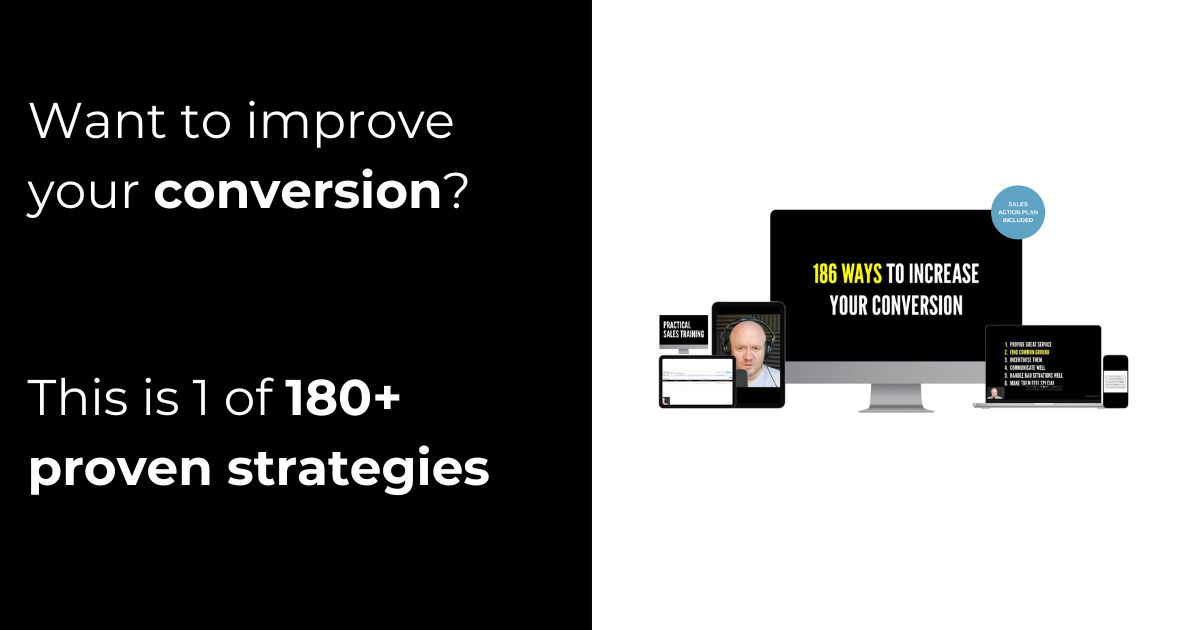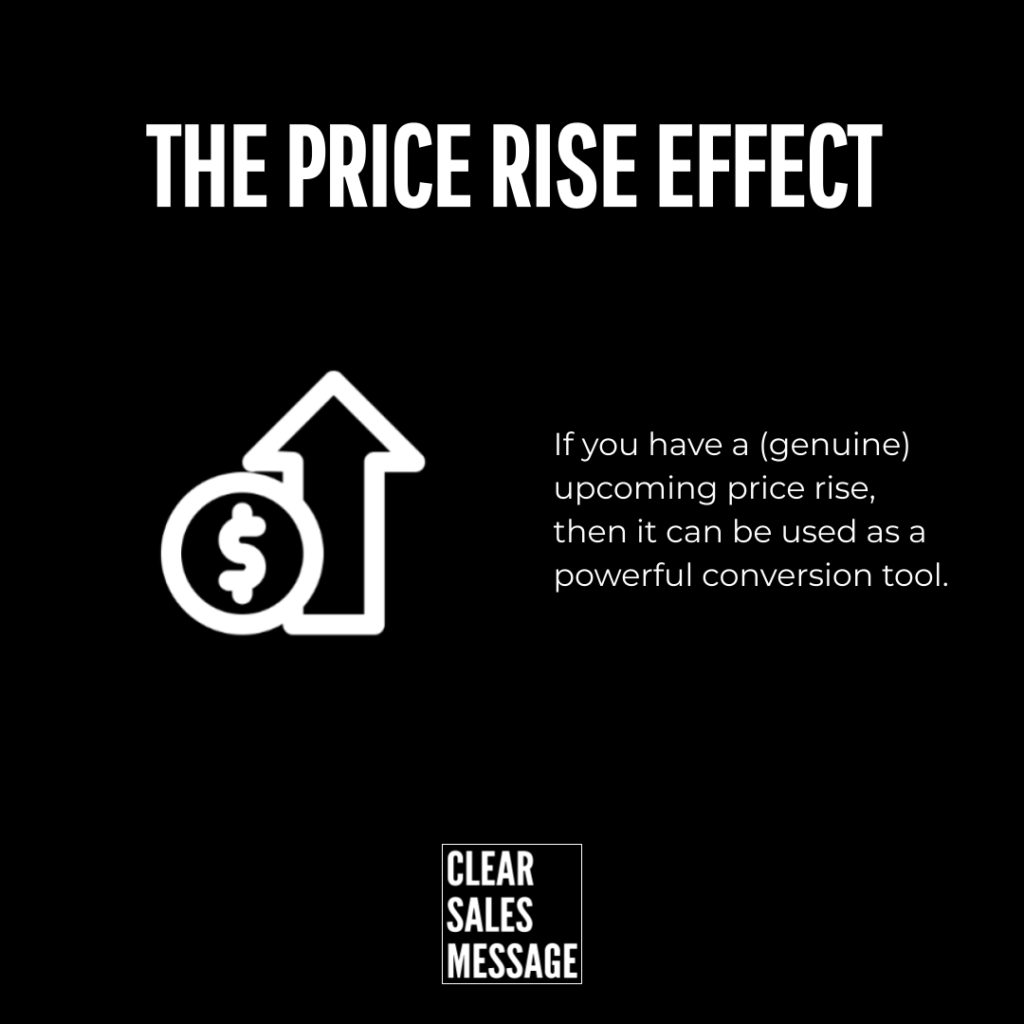Practical Sales Training™ > How To Convert > The Price Rise effect
What is it?
If you want to increase your conversion and encourage potential buyers to act, then a price rise is a powerful tool encourage action.
Why does it work?
It works because people have a natural loss aversion. If I’m considering buying something and the price rises by £500 on the 1st September, then I will be spending an additional £500 for nothing, so it makes sense to take action before it’s too late- if I’m seriious.
A price rise mixes the fear of missing out, the wish to spend less and the pressure of a countdown that helps to separate the buyers from the browsers.
How can you use it?
This ONLY works if you have a genuine price rise coming up. This does not work for unrealistic discounts, deals and false scarcity.
If you have a price rise coming up, then talking about it early and also reminding buyers of exactly the kind of amazing results you achieve for your clients can be a powerful motivator and way to get potential buyers off the fence.
If you don’t have a price rise imminent, then an alternative and equally powerful tool is a flash sale which again combines time scarcity and the fear of missing out (or spending more unnecessarily)
Hypothetical Example:
A business coach charges £2,000 for a 12-week coaching program but announces:
“From 1st October, my program price will increase to £2,500 due to high demand and added features. Lock in your spot now to secure the current price.”
Potential buyers who are already considering the program feel the urgency and loss aversion – why pay £500 more for the same program later? This motivates them to act now instead of procrastinating.
Another Example:
A software company sends an email:
“We’re increasing our Pro Plan from £49/month to £59/month on 1st September. Upgrade now and you’ll lock in the old price for life.”
The promise of lifetime savings adds weight to the urgency and makes the offer more appealing.
See also



